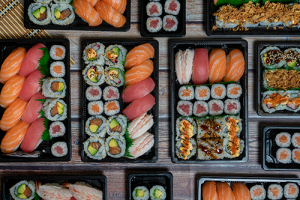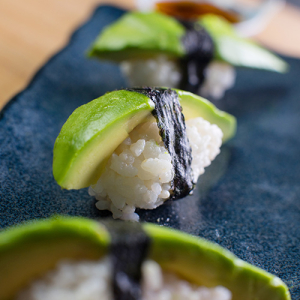In the mists of time, along the fertile riverbanks of ancient Japan, a culinary tradition was born from necessity and ingenuity. To preserve their bountiful catch, fishermen would encase fish in fermented rice, allowing natural fermentation to safeguard the fish for months. This method, known as narezushi, was less about flavor and more about sustenance; the rice, having served its purpose, was discarded, and the preserved fish was consumed.
Sushi History


As centuries unfolded, the Japanese palate evolved, finding harmony between the sourness of fermented rice and the richness of fish. This evolution birthed namanare, a dish where both rice and fish were consumed before fermentation rendered them overly pungent. It was a delicate balance, a dance between time and taste, capturing the essence of fleeting freshness.
The Edo period ushered in a transformative era for sushi. The bustling streets of Edo (modern-day Tokyo) demanded sustenance that was both convenient and delectable. Enter haya-zushi, the fast food of its time, where vinegared rice was paired with fresh fish, vegetables, and dried foods, eliminating the need for lengthy fermentation. This innovation not only preserved the nutritional integrity of the ingredients but also catered to the rapid pace of urban life.


By the early 19th century, sushi had firmly rooted itself in Japanese culture, transcending its humble beginnings to become a symbol of culinary artistry. From preservation technique to gourmet delicacy, sushi’s journey mirrors Japan’s own evolution—a testament to resilience, adaptability, and an enduring appreciation for the gifts of nature.
Sushi Innovation

Sushi has evolved far beyond its traditional roots, becoming a global culinary sensation shaped by cultural influences, innovation, and technology. As sushi gained popularity outside Japan, it adapted to new tastes—leading to the creation of iconic rolls like the California Roll, which replaced traditional tuna with avocado to appeal to Western palates.
A major turning point in sushi’s modernization came with the emergence of sushi-making machines. As demand grew, both in Japan and internationally, restaurants and food service businesses sought efficient, high-quality solutions to maintain consistency while meeting increasing customer expectations. Automated sushi machines streamlined production, ensuring precision in rice distribution, rolling, and shaping—enabling businesses to scale without compromising quality.

This shift was particularly evident in North America, where sushi became not just a delicacy but an everyday dining option. Grocery stores, quick-service restaurants, and large-scale sushi chains integrated advanced sushi machines, allowing them to serve fresh, high-quality sushi at a competitive price. Recognizing this growing market, Xtop entered North America as a pioneer in premium sushi machine technology. By partnering with industry leaders and businesses seeking efficiency without sacrificing authenticity, Xtop has played a crucial role in shaping the next era of sushi-making—one where tradition meets innovation, and quality remains paramount.

Today, sushi is more than just a meal; it represents cultural fusion, craftsmanship, and technological advancement. With the help of Xtop’s cutting-edge solutions, the art of sushi-making continues to evolve, making premium sushi more accessible than ever before.
